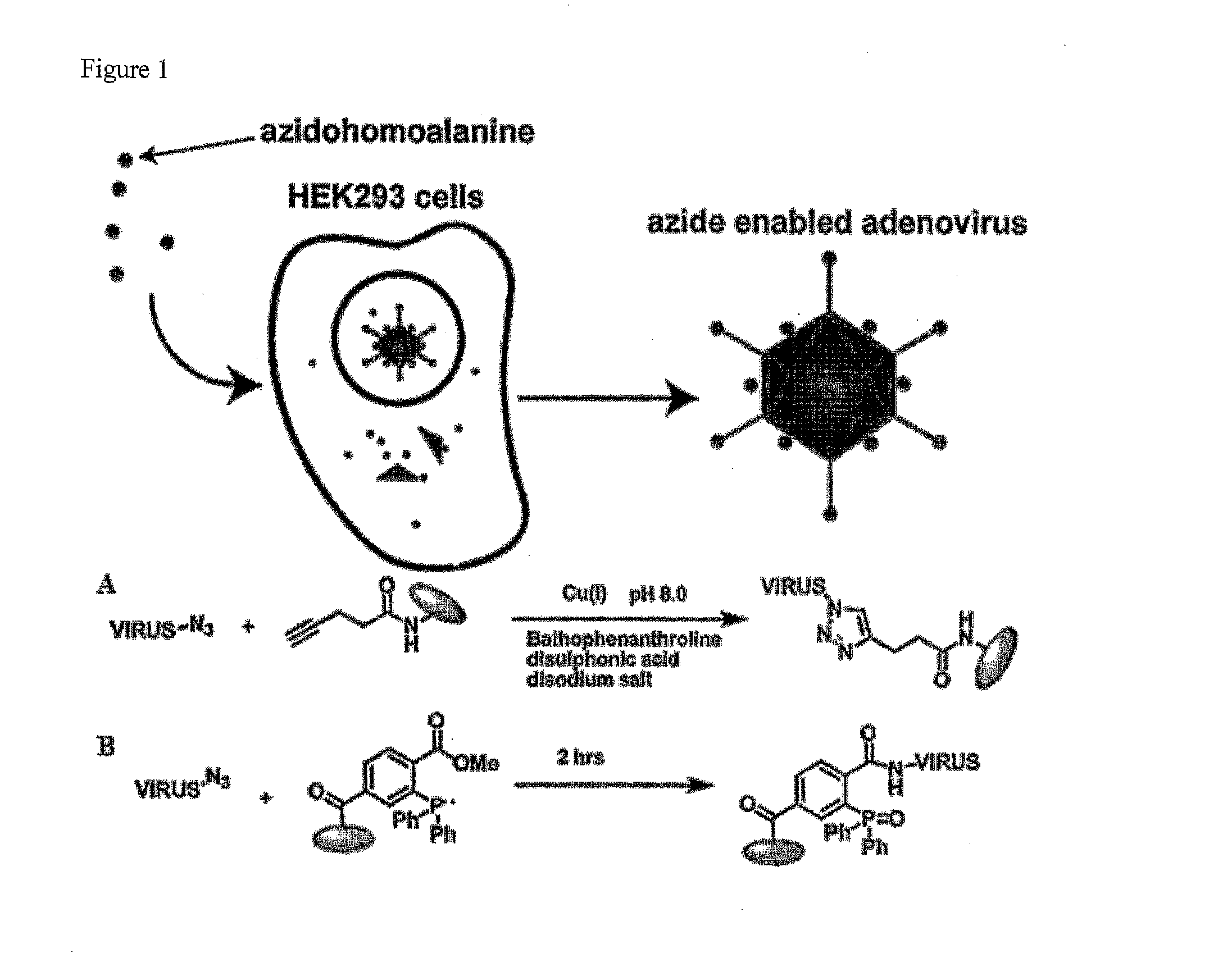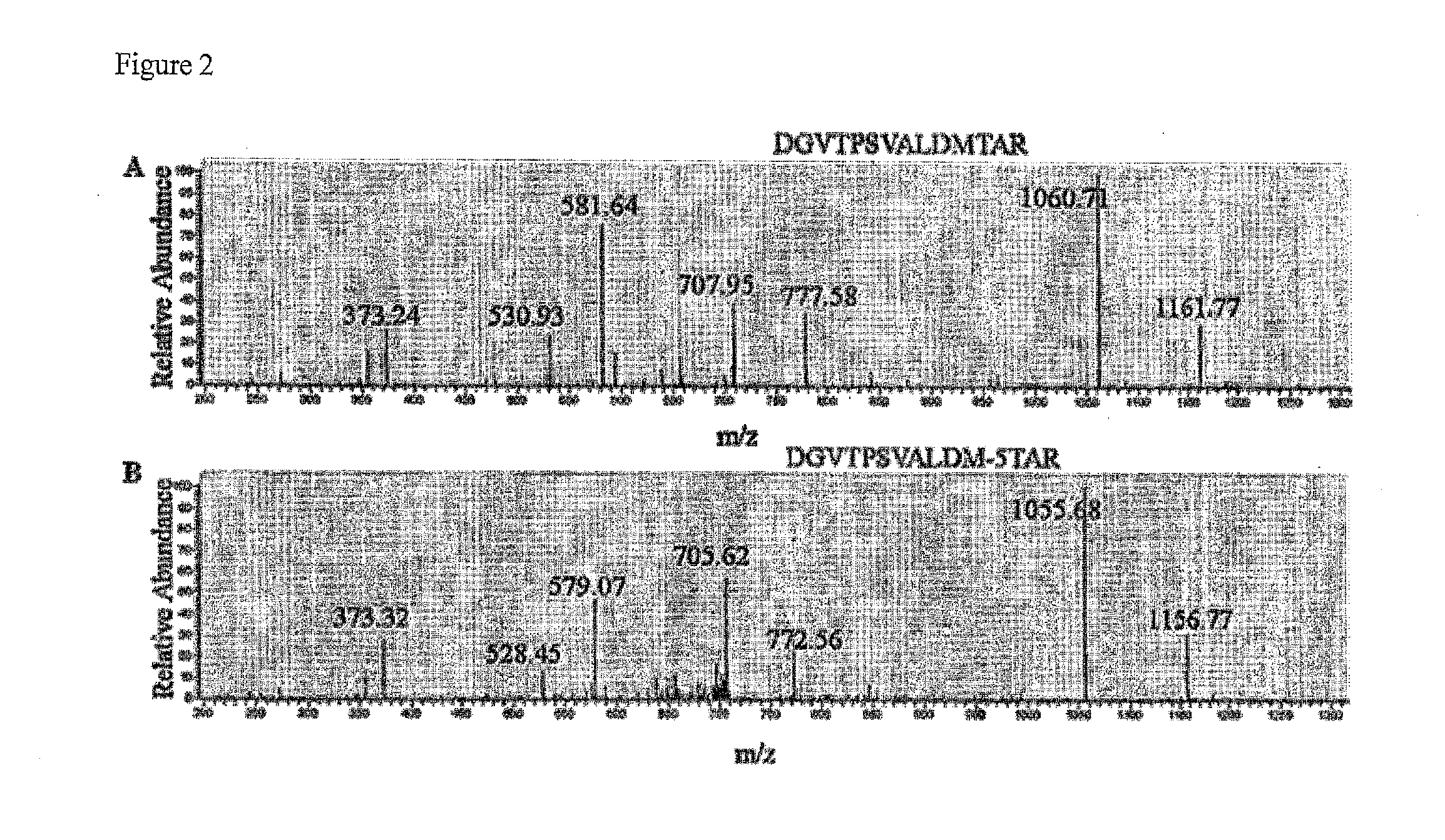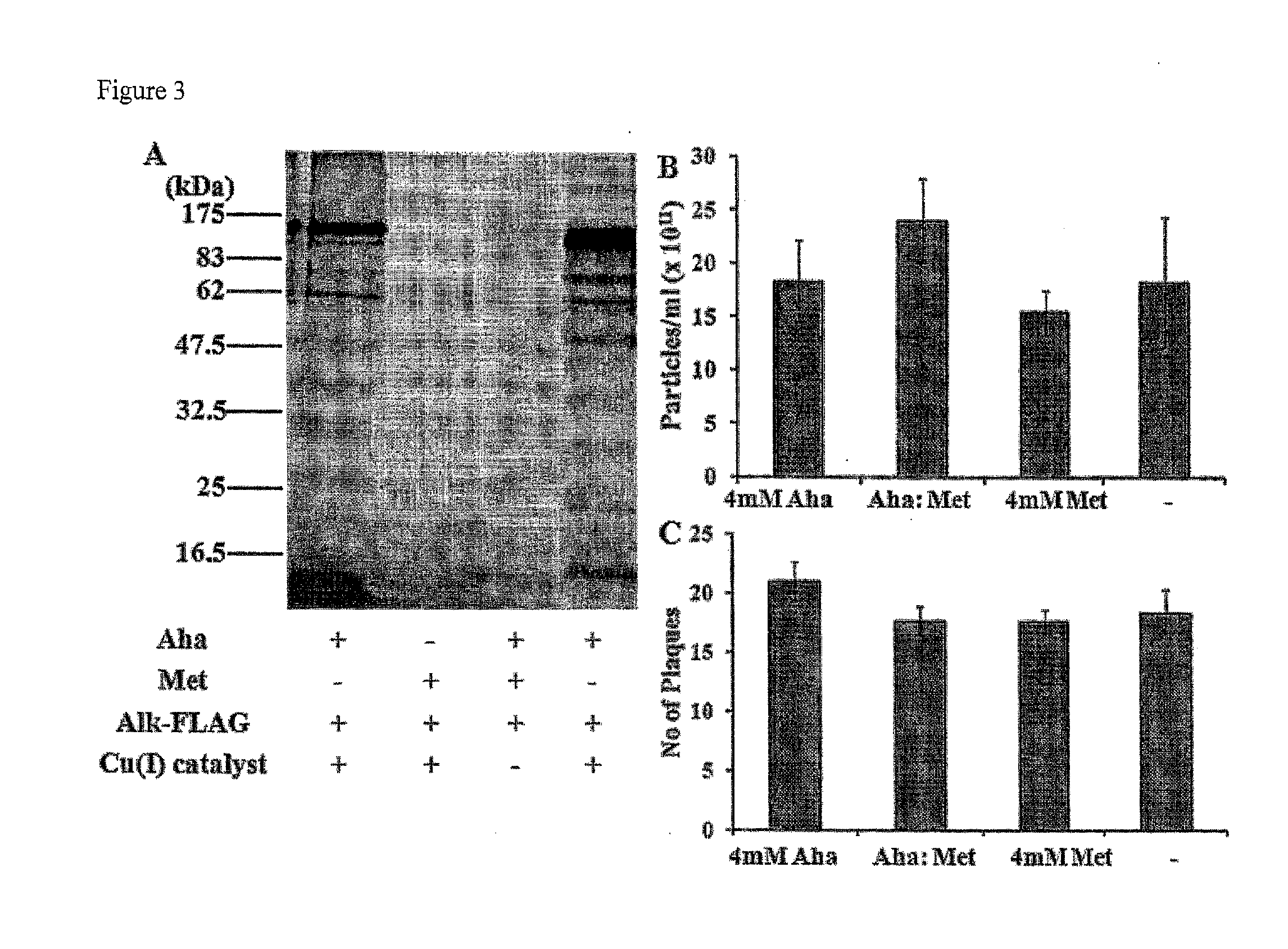Viruses modified with unnatural moieties and methods of use thereof
a virus and unnatural technology, applied in the field of compositions and methods for making and using modified viruses, can solve the problems of limited access to functionality, incomplete control of the site of modification, and limited surface tailoring
- Summary
- Abstract
- Description
- Claims
- Application Information
AI Technical Summary
Benefits of technology
Problems solved by technology
Method used
Image
Examples
example 1
Materials and Methods Used in Examples 2-7
[0234]All chemical reagents were obtained from commercial sources and used without further purification unless otherwise noted. NMR spectra were recorded on a Varian 300 MHz NMR spectrometer or Varian 400 MHz NMR spectrometer. Mass spectra for the small molecules were obtained using an Agilent 1100 LC / MSD VL instrument. Thin Layer Chromatography (TLC) was performed on Merck DC-alufolien with Kieselgel 60E-254 and column chromatography was carried out on silica gel 60 (Merck; 230-400 mesh ASTM). RP-HPLC was performed using a L201243 Shimadzu on a C12 Jupiter column (250×10 mm; Phenomenex). UV-Visible absorbance was recorded on a Beckmann Coulter DU 730. Electrophoresis gels were scanned on a Typhoon 9400 fluorescent gel scanner.
[0235]Synthesis of Azidohomoalanine (Aha).
[0236]Azidohomoalanine was synthesized in four steps as described (FIG. 7):
[0237]Compound 3.
[0238]L-Homoserine (1.45 g, 12.7 mmol) was added to a solution of 9-Borabicyclo(3.3....
example 2
Production and Characterization of Aha Labeled Adenovirus Particles
[0262]Metabolic incorporation of Aha was accomplished by production of adenovirus particles in the presence of methionine-free medium containing the free, unnatural amino acid. Specifically, the inventors infected HEK 293 cells with adenovirus type 5 particles at an MOI of 5. Eighteen hours post infection, growth media was removed from the cells and the cells washed with Tris buffer. Methionine-free media, supplemented with 4 mM Aha (−Met / +Aha), was added to each plate of infected cells and the infection allowed to proceed for six hours. At this time the −Met / +Aha media was removed and substituted with complete media until the cells were harvested for virus. At 48 hours post-infection the cells were harvested, lysed and the virus was purified by CsCl equilibrium gradient centrifugation. In order to generate the appropriate controls, particle production was also carried out with 4 mM methionine and a mixture of 4:1 Ah...
example 3
Chemical Modification of Aha Labeled Virus
[0265]For specific chemical labeling of azides, three different reaction techniques have been developed. Copper assisted “click” reaction, the Staudinger ligation reaction and the strain promoted electrocyclization. For the inventors' experiments the inventors have used both the copper assisted “click” reaction and the Staudinger ligation reaction. For this the purified Ad5 viral particles were subjected to copper assisted azide alkyne cycloaddition reaction (7) with an alk-TAMRA ligand. Reaction was carried out in a deoxygenated glove bag overnight in the presence of 1 mM copper (I) bromide and 3 mM SBP (bathophenanthroline disulphonic acid disodium salt) ligand. Fluorescent gel scanning was performed on the whole virus particle run on a SDS-PAGE gel. Gel scanning showed strong labeling on a number of the adenoviral capsid proteins (FIG. 3A) for samples labeled with 4 mM Aha. No signal was observed with metabolically unlabeled virus or “cli...
PUM
| Property | Measurement | Unit |
|---|---|---|
| temperature | aaaaa | aaaaa |
| pore size | aaaaa | aaaaa |
| pH | aaaaa | aaaaa |
Abstract
Description
Claims
Application Information
 Login to View More
Login to View More - R&D
- Intellectual Property
- Life Sciences
- Materials
- Tech Scout
- Unparalleled Data Quality
- Higher Quality Content
- 60% Fewer Hallucinations
Browse by: Latest US Patents, China's latest patents, Technical Efficacy Thesaurus, Application Domain, Technology Topic, Popular Technical Reports.
© 2025 PatSnap. All rights reserved.Legal|Privacy policy|Modern Slavery Act Transparency Statement|Sitemap|About US| Contact US: help@patsnap.com



